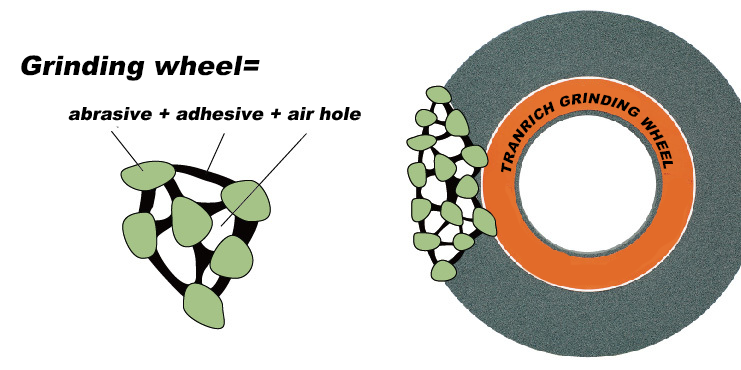Grinding wheel is a kind of cutting work, is a kind of abrasive cutting tools. In a grinding wheel, the abrasive has the same function as the serrations in a saw blade. But unlike a saw knife, which has serrations only at the edges, the abrasive of a grinding wheel is distributed throughout the wheel. Thousands of hard abrasive particles are moved across the workpiece to remove tiny pieces of material.
Generally abrasive suppliers will provide a variety of products for various grinding applications in metal processing. Choosing the wrong product can cost a lot of time and money. This paper provides some basic principles for selecting the best grinding wheel.
Abrasive: type of sand
Grinding wheel or other combined grinding stone has two main components:
The grits that actually do the cutting, and the combination that holds the grits together and supports the grits while cutting. The structure of the grinding wheel is determined by the ratio of abrasive, binder and void between them.
The specific abrasives used in the grinding wheel are selected according to the way they interact with the workpiece material. The ideal abrasive is one that has the ability to remain sharp and is not easily blunted. When passivation begins, the abrasive will break to form new points. Each type of abrasive is unique, with different hardness, strength, fracture toughness and impact resistance.
Alumina is the most commonly used abrasive in grinding wheels.
It is commonly used to grind carbon steel, alloy steel, high speed steel, malleable cast iron, wrought iron, bronze and similar metals. There are many different types of alumina abrasives, each specially manufactured and blended for a particular type of grinding operation. Each type of alumina has its own name: usually a combination of letters and numbers. These names will vary from manufacturer to manufacturer.
Zirconia alumina is another series of abrasives, made by mixing alumina and zirconia in different proportions. This combination produces a strong, durable abrasive that performs well in rough grinding applications, such as in cutting operations. Also applicable to all kinds of steel and alloy steel.
As with alumina, several different types of zirconia alumina are available.
Silicon carbide is another abrasive used to grind gray iron, cold iron, brass, soft bronze and aluminum, as well as stone, rubber and other non-ferrous metals.
Ceramic alumina is the latest key development in abrasive process. It is a high purity grain produced by gel sintering process. This abrasive can fracture micron scale at a controlled speed. In turn, thousands of new points are forming. Ceramic alumina abrasives are very hard and are used in the demanding precision grinding of steel. They are often mixed with other abrasives in different proportions to optimize their performance in different materials and applications.
Post time: Nov-17-2022





